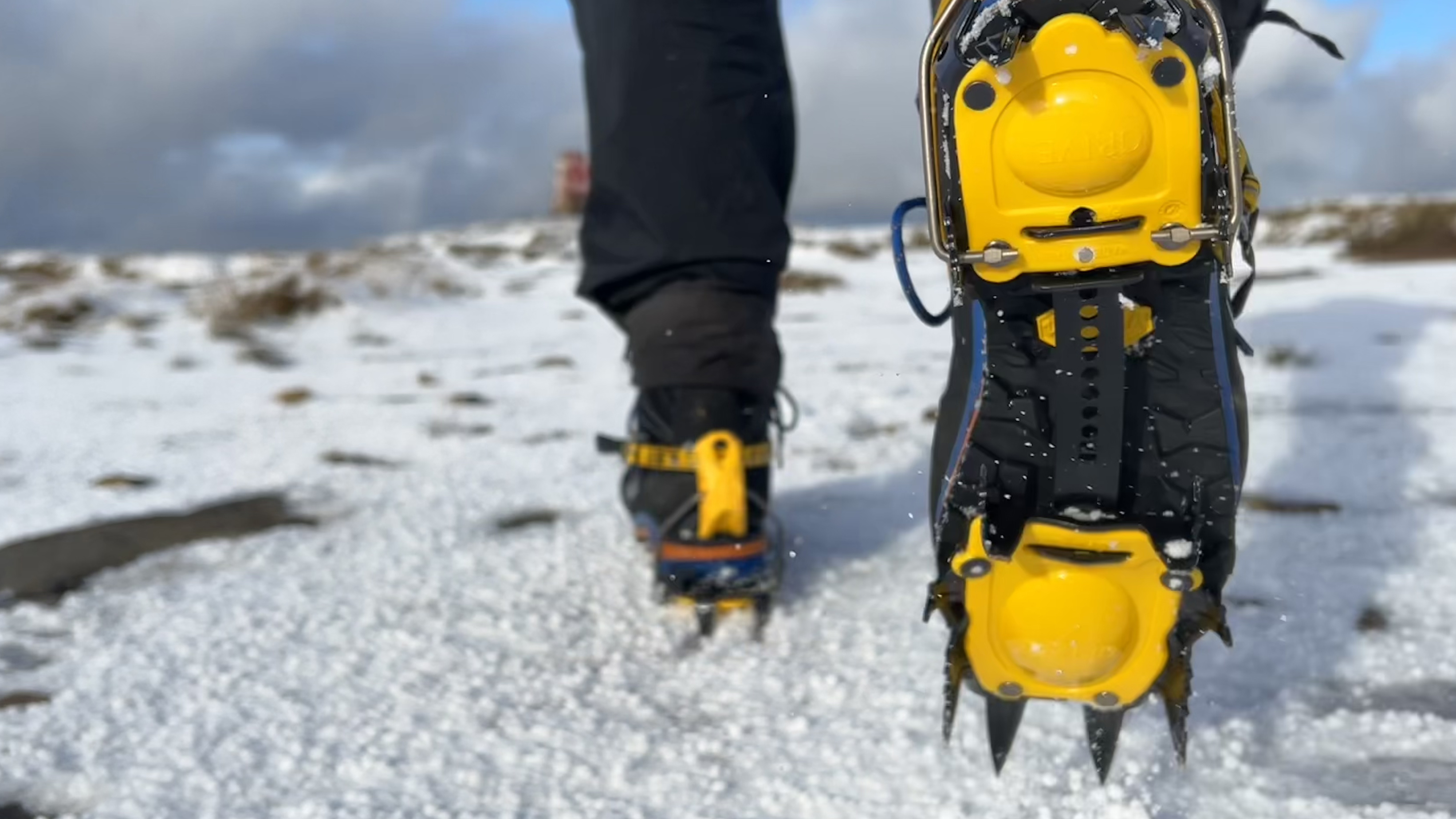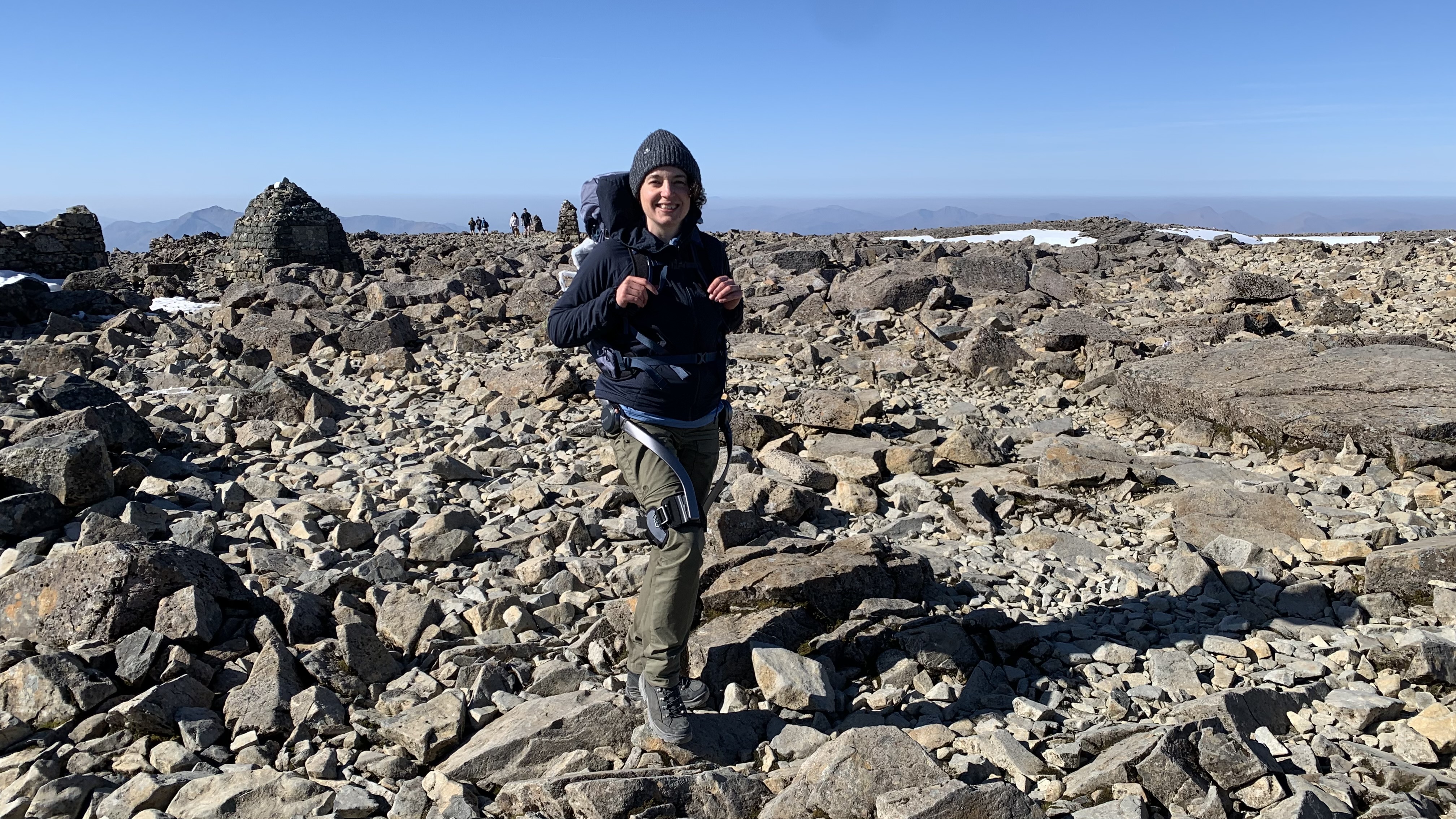Advnture Verdict
These robust yet lighter-than-most crampons are a superb option for winter walkers, glacier crossings and low-grade mountaineering days. The 12 points provide ironclad hold on frozen terrain and are great on rock too, though they’re not quite as long or aggressive as on Grivel’s G12, which is better on really technical routes involving steeper ice. However, for most mountaineers, the Air Tech is a great option.
Pros
- +
Superb grip on mountaineering terrain
- +
Shorter spikes provide stability on rock
- +
Highly durable
- +
Easy to fit
- +
Lightweight for 12-point crampons
- +
Good value
- +
Anti-balling design stops snow build-up
Cons
- -
Spike length not ideal for extremely steep terrain
You can trust Advnture
Have you ever been to Courmayeur? The Italian town enjoys a spectacular setting, at the foot of arguably Mont Blanc’s most impressive side, with the intimidating black tower of Aiguille Noire clawing at the sky towards the white dome of Western Europe’s highest mountain. It was in Courmayeur, 1909, that English intellectual and mountaineer Oscar Eckenstein handed his drawing of the original crampon design to a local blacksmith. The blacksmith’s name was Henri Grivel.
Fast forward over a century and Grivel’s name is still the most famous name in crampon manufacture, especially in Europe. In the intervening years, Henri’s son Laurent went on to invent front points in 1929, an innovation without which there’d be no ice climbing. Then, in 2003, the brand solved the issue of snow build up between the spikes with its anti-balling plates. Grivel continues to be at the forefront of crampon design to this day.
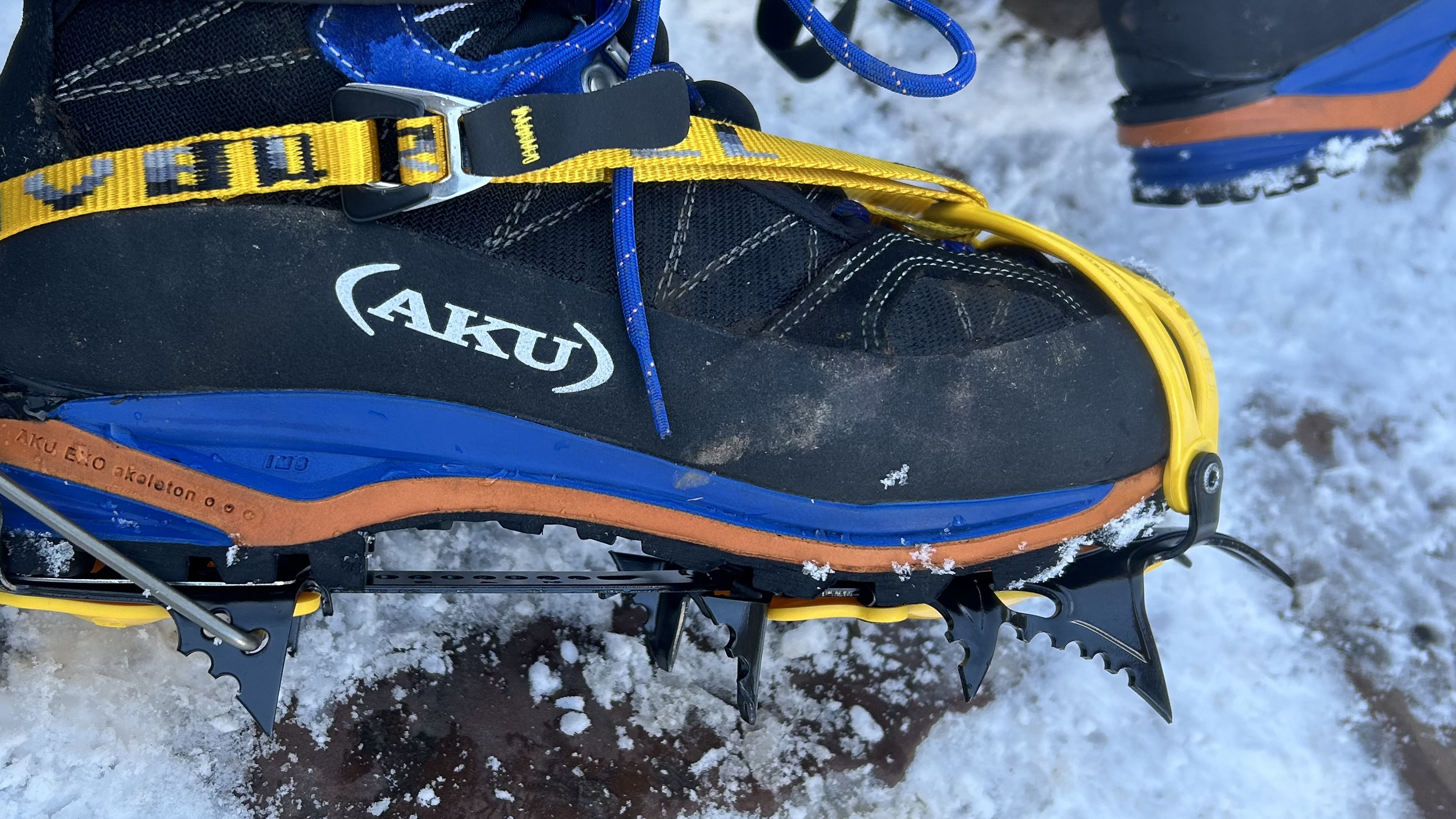
Crampons tend to have either 10 or 12 points, with 10 points suited to winter walking and glacier travel and 12 points geared towards more technical mountaineering, alpinism and ice climbing. When it comes to 12-point crampons, Grivel’s G12 is the benchmark, with a formidable reputation and popularity across the world. This tried and tested classic tops our best crampons buying guide at the time of writing, while the brand champion it as the “king of crampons”.
However, it’s not the only 12-point device the brand offer. Enter the Air Tech, a lighter option for mountaineering adventures that’s available with multiple binding systems. I tested the New-Matic EVO version of this superb traction device.
First impressions
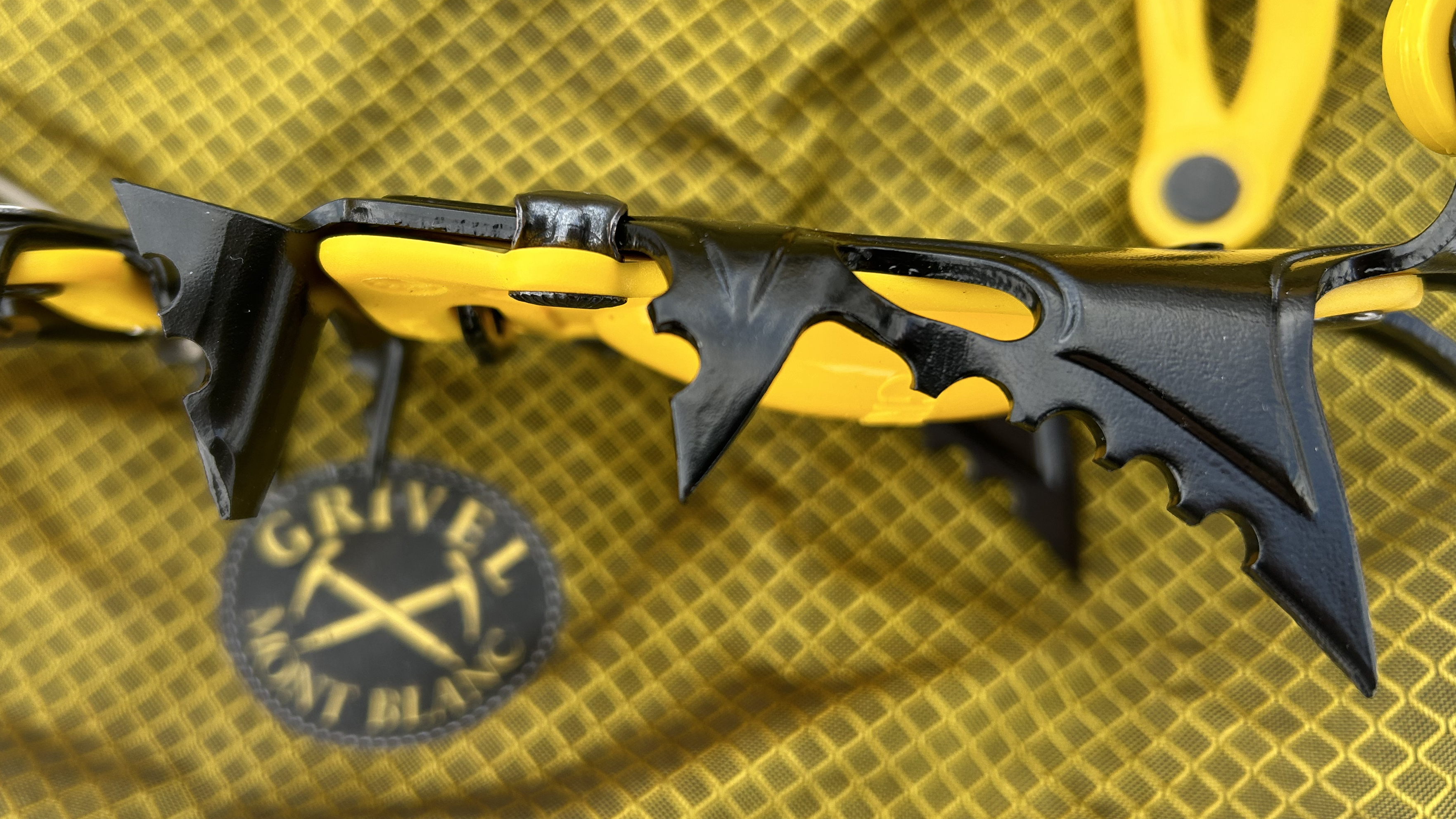
List price: £128.95 (UK)
Weight: 832g (1.8lbs) per pair
Materials: Nickel-Crome Molibdenum Steel, plastic
Number of points: 12 (8 front, 4 rear)
Best use: Glacier trekking, winter walking, low-grade mountaineering
To the uninitiated, there wouldn’t appear to be a huge difference between the Air Tech and the G12. However, as soon as you start studying the spikes, the differences are obvious. The G12 features long, sharp daggers at the front and serrated blades at the back; whereas, aside from the similar front points, the Air Tech’s teeth are shorter and serrated.
While I’ve used the G12 before, my previous main pair of crampons were the Black Diamond Seracs, another popular choice among 12-point devices. With a similar price and weight to the Air Techs, they make for a good comparison. The front points on the Air Tech are noticeably more aggressive, as are the serrated spikes further back too. I was intruiged to see how performance would differ in the winter backcountry.
Fitting the Air Techs was a doddle, though the New-Matics use the same style of binding system as my previous Seracs, so I was already well-practised.
Meet the reviewer

Alex is a qualified Mountain Leader and former President of the London Mountaineering Club. He's happiest either moving fast and light through the mountains in summer or taking on cold winter adventures in the Scottish Highlands.
Features
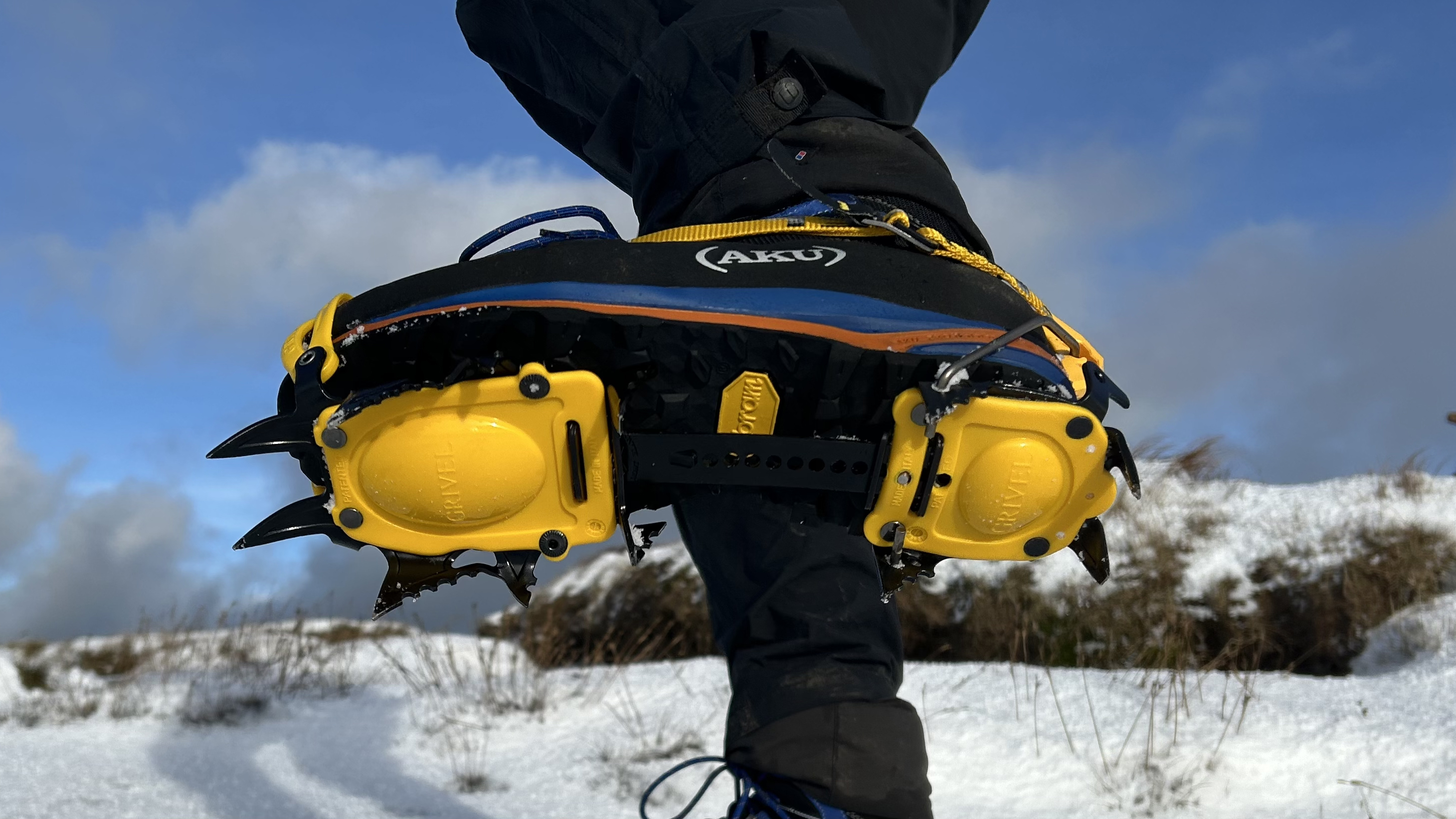
The Air Tech New-Matic is a C2 crampon, which means it fits B2 winter hiking boots, such as the Scarpa Manta Tech GTX and the La Sportiva Trango Tower GTX. The binding system comprises a plastic heel clip that snaps into place on the boot’s heel welt and a plastic toe basket that wraps around the front of the boot. This is then all brought together by threading the tether strap through the toe binding and back to the heel clip, before tightening it all up.
C2 crampons come in two halves that are connected by the flex bar (sometimes called the center bar) which is slightly curved towards the big toe. The flex bar has slots along its length, a bit like a belt, allowing you to adjust the overall length of the crampon to properly fit your boot of choice.
In terms of spike layout, the Air Tech is fairly standard for a 12-point device. There’s two sharp horizontal front point daggers for hold on the steeper snow and ice during more technical mountaineering missions. Between here and the midfoot are six triangular spikes, smooth on their front side and serrated with semi-circular indents on their back. The front four of these are sharpened to a point, whereas the back two are flattened.
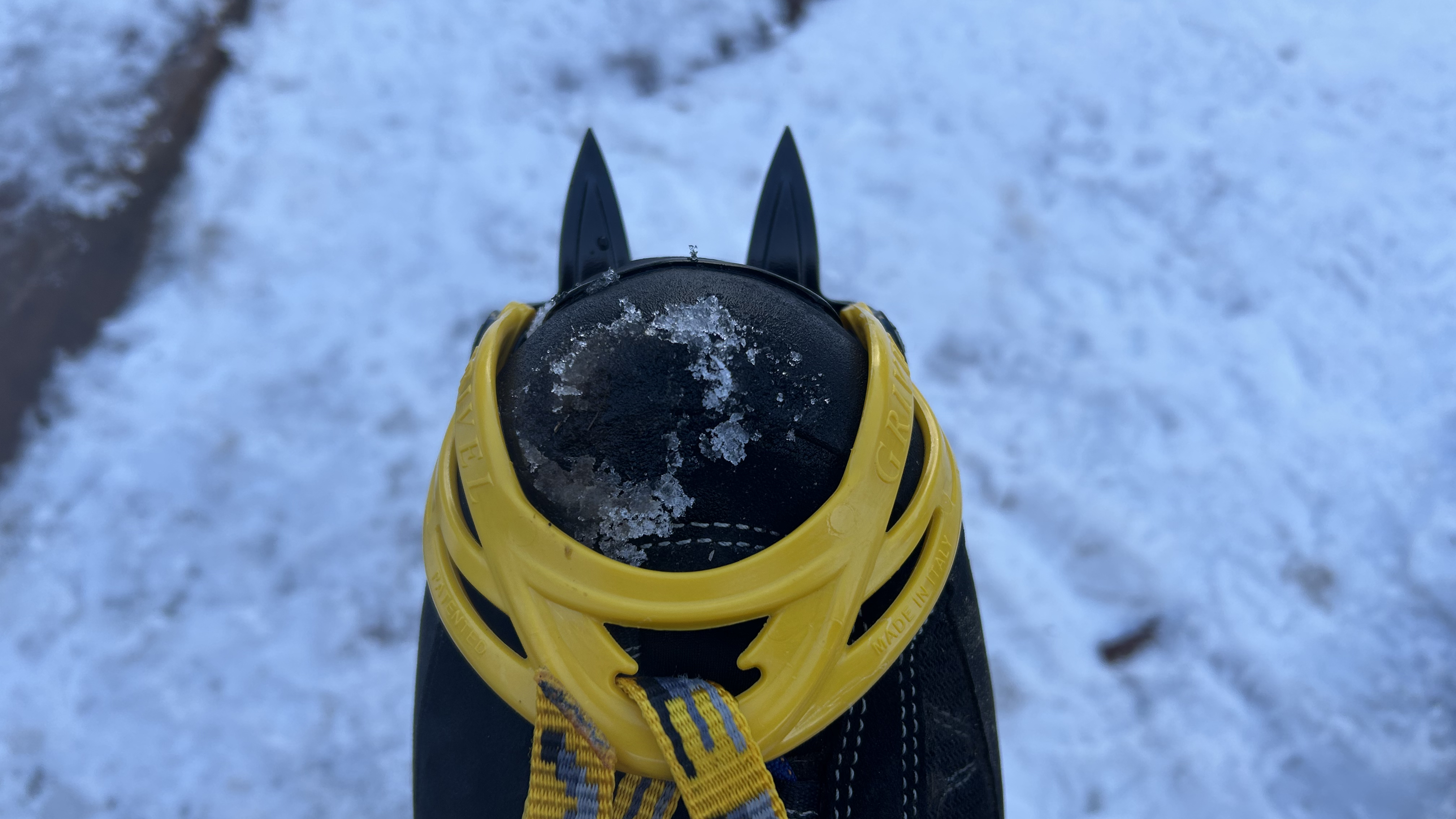
Grivel use Nickel-Crome Molybdenum Steel for the spikes. The nickel chromium and molybdenum alloys are added in precise percentages to give the resulting steel alloy both its toughness and its ability to perform in low temperatures. This has two advantages over standard stainless steel. One, the spikes maintain their sharpness for much longer and, two, when stainless steel is processed, it can lead to tiny cracks forming. This can lead to durability issues further down the line, not what one needs when hundreds of meters up in a remote gully.
As mentioned, Grivel introduced the anti-ball (or antibott) plate to the world in 2003, solving the issue of dangerous snow built up between the spikes. These are the two rubbery, dome shaped bulges, bearing the brand’s name, on the underside of the device. They compress with each step and spring back out to shed snow from between the points – ingenious.
For those wanting even less weight on their feet, Grivel also sell the Air Tech Light, which weighs in at an impressive 556g (1.2 lbs) – a significant weight saving. The Light version makes use of aluminium rather than steel and are perfect for those who want move across glaciers and up snow slopes at speed, though rocky terrain is liable to wear them out faster than their steel counterparts.
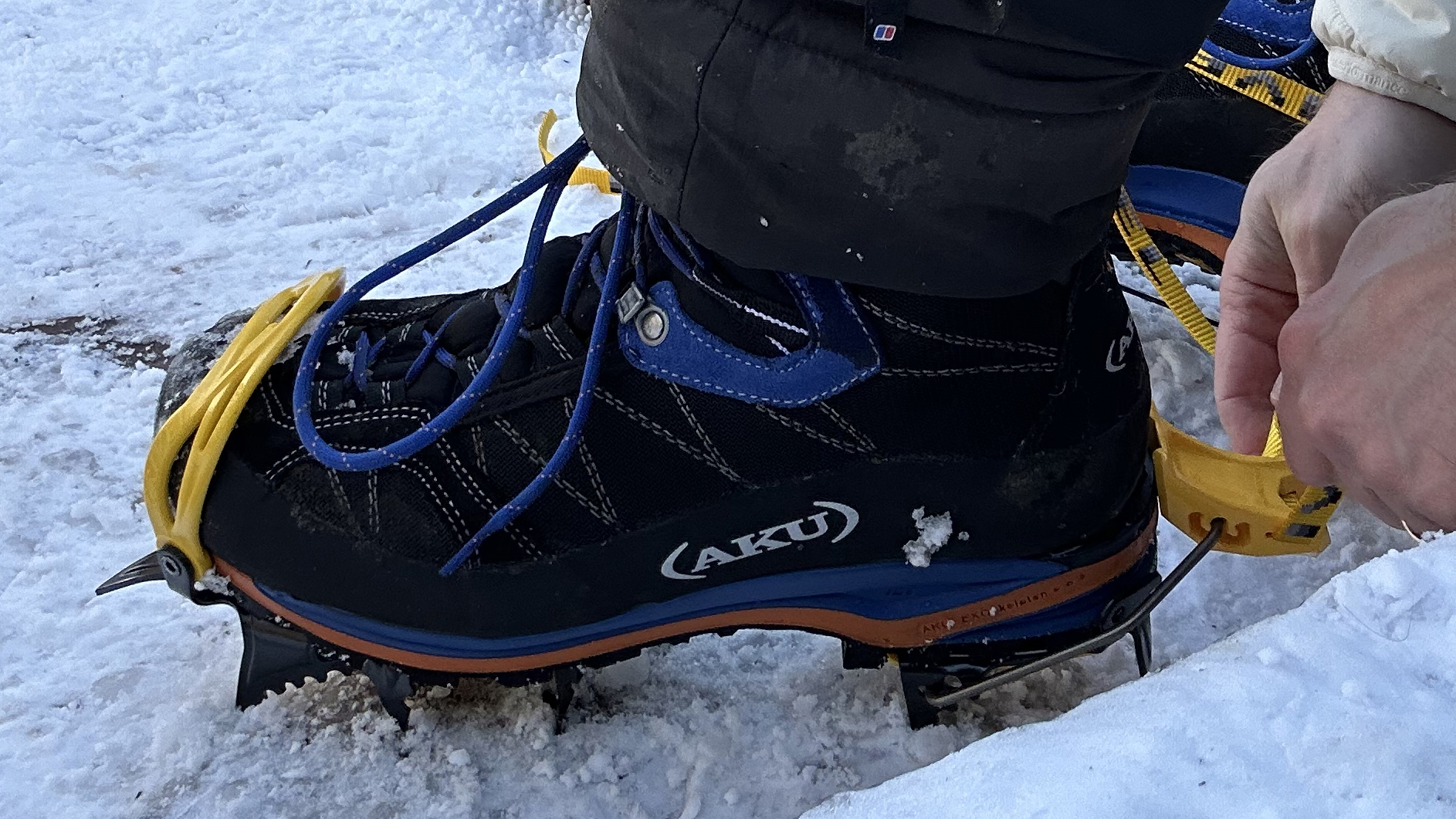
I was testing the New-Matic EVO version of the Air Techs, which is a classic C2 crampon featuring a heel clip at the back and a basket at the front. Other options include the New-Classic EVO, which features a basket at the back and front, making it compatible with a wider range of winter boots. Then, there's the Cramp-O-Matic EVO and Dual-Matic EVO fittings, with heel clips and metal toe bails for a secure fit to a B3 boot.
On the hill
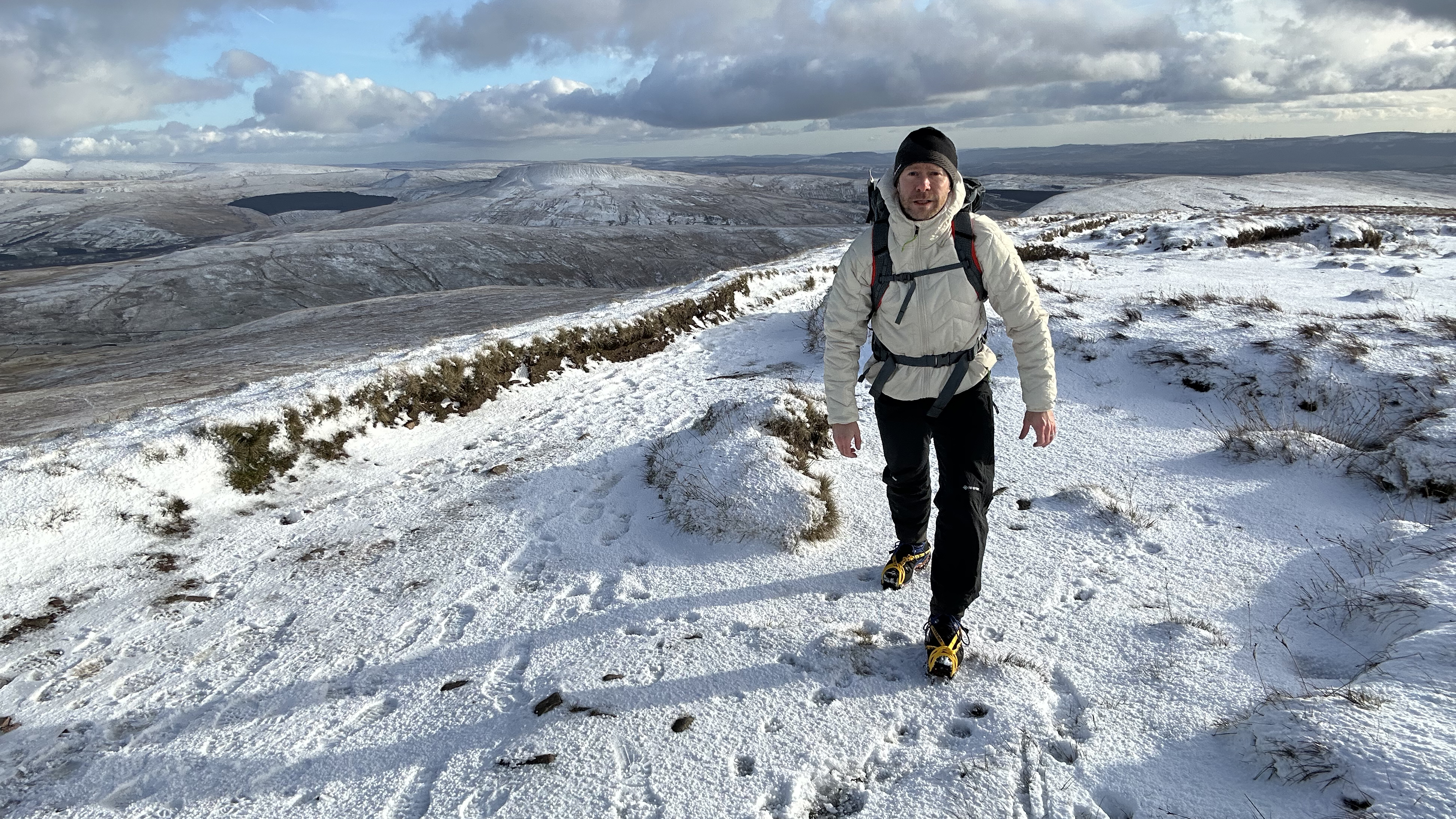
So far, I've tested the Air Techs in the wintry fells of England's Lake District and South Wales' Bannau Brycheiniog (Brecon Beacons), mixing easy winter walking with ascents of steeper slopes and gullies. As I expected, the Air Techs were well within their comfort zone and they were a pleasure to wear everytime I liberated them from their crampon bag.
If you've put crampons on before, fitting the Air Techs will be straightforward enough. If you need to tinker with the fit, there are plenty of customization options, including the option of moving the heel bar up and down on its clip by slotting it into the different grooves. This was admittedly a bit of a fiddly process but the option of tailoring the clip precisely to a boot's welt is a welcome one. The plastic in the heel binding is super durable – developed for use in ski bindings – which is a good thing as the process of clipping in places plenty of strain on these little components.
These are some of the lightest 12-point crampons around. At 832g (1.8lbs) per pair, they sneak under the weight of something like the Petzl Vasak and are noticeably lighter than the G12s. I've combined them with both the Aku Tengu and the Salewa Ortles Edge boots and they were secure throughout and allowed me to move comfortably with a little more speed than heavier crampons.
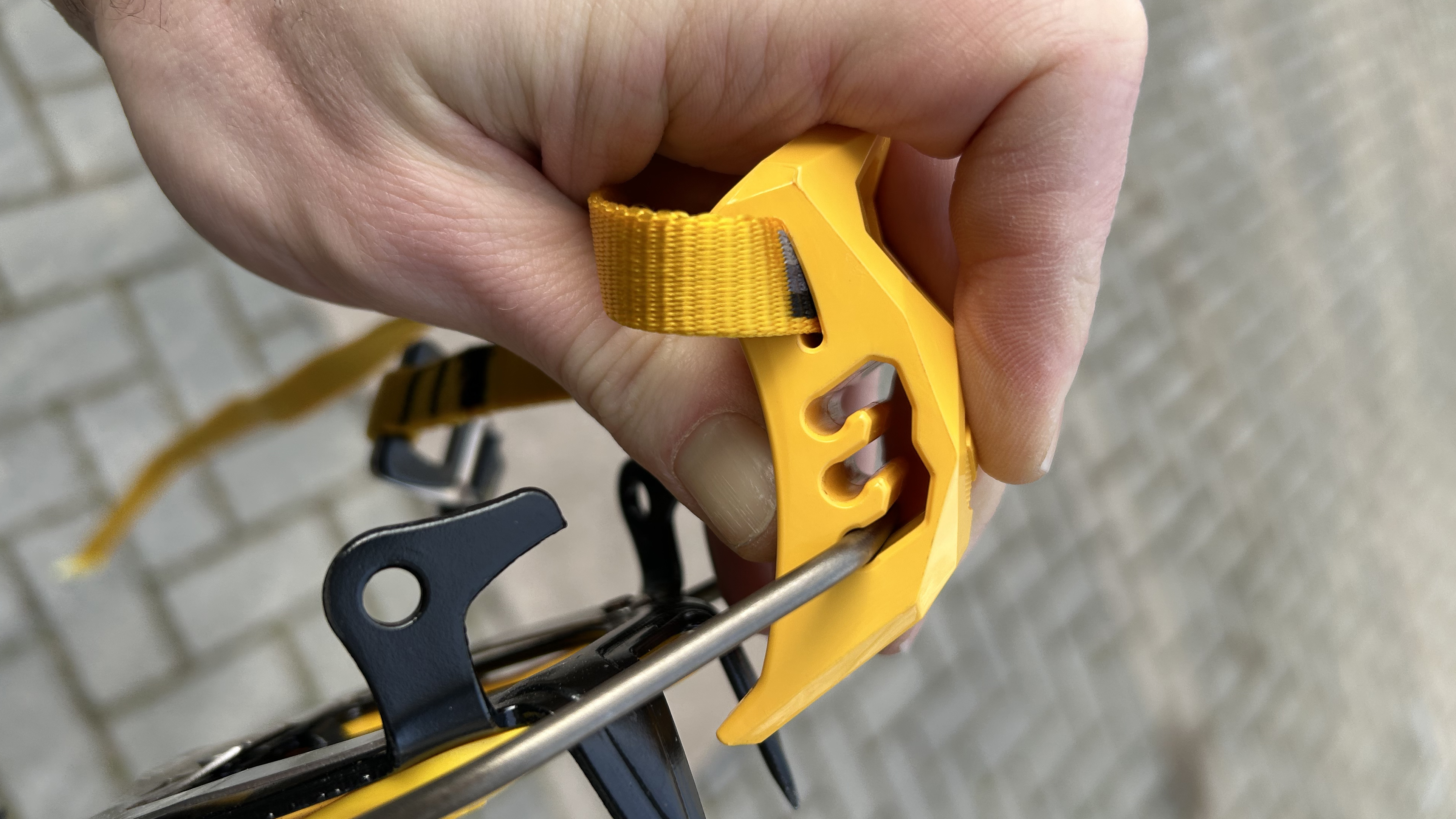
So, for winter walking, the Air Techs are ideal. This is especially true on the kind of ridge traverses where you find yourself on firm snow one minute and then rock the next. I found that the short spikes feel more stable on rock than crampons with longer points do.
While the spikes aren't as aggressive as some, they still provide all the traction one could wish for on low-grade mountaineering terrain and easy ice. The front spikes hold beautifully when front pointing and are nice and precise when perched on rock edges during mixed climbs. It's hard to say where the Air Techs would meet their limit when it comes to technicality, though general consensus is that you'd be safer in C3 crampons once you get into the realms of ice climbing and tougher mountaineering.
Grivel's tried-and-true antibott design works beautifully at stopping snow from building up between the spikes. The plates are durable too, though if they do begin to wear out, you can always get Grivel to fit a replacement.
When it comes to stashing the crampons away, they collapse down into a small and compact unit. I measured the bundle at 28 x 9 x 11 cms.
So far, I've been impressed with the lightweight versatility of the Air Techs and I look forward to many more snowy adventures in them in the future. Compared to my previous Seracs, performance levels are similar when subjected to the kind of low-grade mountaineering I tend to do, though the Air Techs are that little bit lighter.
Alex is a freelance adventure writer and mountain leader with an insatiable passion for the mountains. A Cumbrian born and bred, his native English Lake District has a special place in his heart, though he is at least equally happy in North Wales, the Scottish Highlands or the European Alps. Through his hiking, mountaineering, climbing and trail running adventures, Alex aims to inspire others to get outdoors. He's the former President of the London Mountaineering Club, is training to become a winter mountain leader, looking to finally finish bagging all the Wainwright fells of the Lake District and is always keen to head to the 4,000-meter peaks of the Alps. www.alexfoxfield.com
